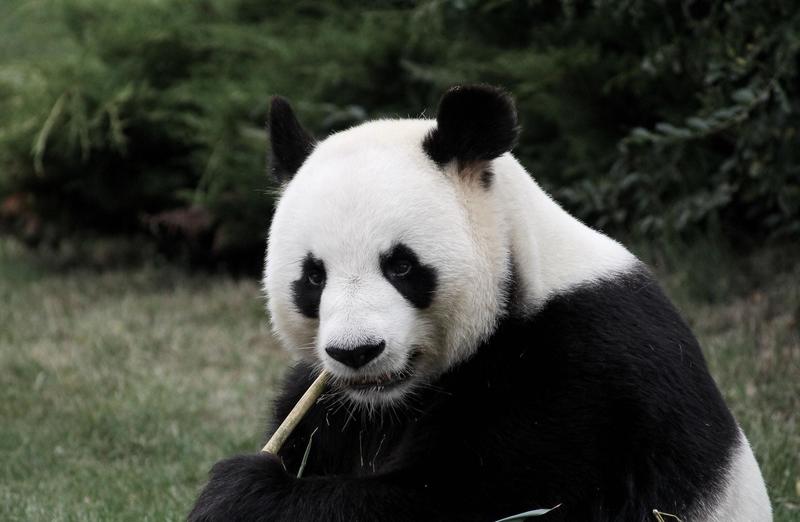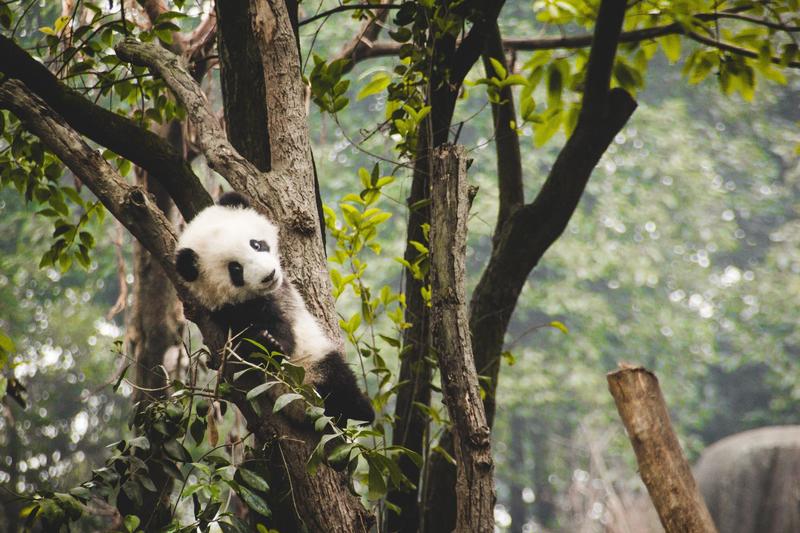Giant panda
Episode #9 of the course “The Most Endangered Species in the World”
Named for their incredible size, giant pandas are bears that inhabit mountainous areas throughout western China and are critically endangered—there are only about 1,800 left in the world after a serious rapid decline in the 20th century. Males can be up to 5 feet long and 350 pounds, while females are significantly smaller at only around 150 pounds. Despite their weight and proportions, giant pandas are excellent tree climbers. Their large size and gentle disposition make them easy targets for poachers interested in their thick black and white patterned fur, which sells for high prices around the world.

The giant panda subsists on a diet of only bamboo and must eat up to 80 pounds of it per day to survive. They are the only herbivore bears and have developed large, flat molars designed for grinding the bamboo’s harsh stalks. Because this limited diet grows only in very specific conditions, pandas have inhabited some of their lands for centuries, but now they are often driven out of these areas when humans develop land for commercialization or agriculture.

Adult pandas are territorial and roam the hillsides to feed on bamboo. Baby pandas in the wild are very rare, as pandas don’t often meet each other and engage in mating. There is more success with mating attempts in captivity, leading researchers to understand more about giant pandas’ mating habits. They live to around 30 years old in captivity, but only about 20 years old in the wild. Conservation efforts concentrate on expanding their natural wild habitat as well as providing resources to better maintain their numbers in captivity.
Share with friends

